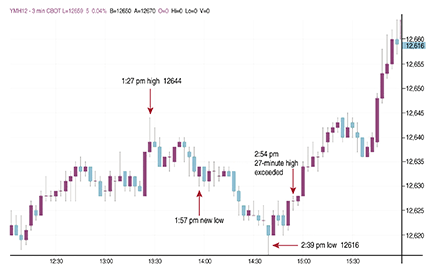
FIGURE 1: THREE-MINUTE CHART OF DOW EMINI. The market does not move in a straight line but seems to rise and fall in tune with the fear and greed of short-term traders.
CYCLES
Shh! Be Very, Very Quiet
In the world of trading, risk, and reward, cycles are natural — and so are the cycles of greed. How do you overcome these cycles or least prosper from them?
Most of us understand and even plan our lives on cycles that occur throughout our lives. Night and day, summer and winter are cycles that a child can understand. The concept can get a bit fuzzy, however, when you think about the cycles that affect each of us without our being aware of them. How about the mood swings we observe in others and others may point out in us? What about the ebb and flow of momentum that occurs during a sporting event?
Cycles have a natural flow to them. When you are amid a cycle, you are aware of what’s going on around you, but you know you can’t fight it; your best bet is to go with the flow. In the world of trading, this means not demanding perfection but recognizing that the risk and reward cycles are natural.
So are the cycles of fear and greed. If we want to prosper from panic, we need to understand the cycles of greed and fear and the time frames that traders must operate within.
The cyclical nature of trading
This article will help you view the market volatility cycles a bit differently than what you may be used to. The more popular way to look at cycles has been to study the recent history of price movements, count the time between relative low points, average the time, and then predict the next turning point in the market. Every time I have attempted to trade this way, the market seemed to go out of phase. What has brought me more success is to see the market swings as cycles of traders’ fear and greed.

FIGURE 1: THREE-MINUTE CHART OF DOW EMINI. The market does not move in a straight line but seems to rise and fall in tune with the fear and greed of short-term traders.